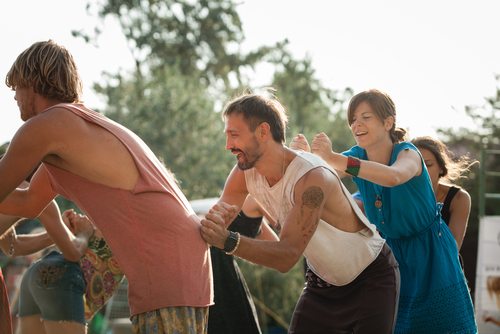Dance and movement therapy can be effective forms of therapy in recovery. The foundation of dance is finding movement in the body by locating the inner impulse or movement which brings a person to life. Learn more about how dance can bring success in recovery.
Movement Therapy and Addiction
Dance has psychotherapeutic benefits for a person’s emotional, cognitive, physical and social being. Individuals with mental, physical and other impairments benefit from dance which is why it is so powerful in restoring people’s lives after addiction. People who struggle with addiction find change uncomfortable and are used to structured, regimented behaviors repeated over and over again. The repetitive behaviors do not serve the individual but addiction keeps the person in the loop time after time. In recovery, movement-based therapies build awareness of what a person can and cannot control. When a person learns to become a witness, that individual can nonjudgmentally observe internal emotional and sensory experiences while also recognizing how behaviors impact the external environment.
Dealing with Emotions
Traditional psychology focuses solely on cognitive processes, discounting the body’s intelligence to recognize integration of both body and mind. Anxiety is a part of recovery but is typically labeled as an emotion rather than explored fully in the body. Behavioral change in dealing with negative thoughts or emotions starts with the willingness to look at the things that are scary, turn towards the fear and bring balance back into the mind and body.
Practicing Presence
Being present is a very healing experience for both the mind and body. Addiction steals away presence as a person is constantly seeking more of a drug or substance rather than staying focused and intentional on what is right in front of the individual. Dance therapy supports recovery through supporting physical expression of wonder and teachers how to change an internal experience into a combined effort of movement and self-awareness. Being able to stop thinking for a moment and be in the body can release negative emotions and feelings to help move forward in recovery, and in life.
Loving the Body Again
The body takes a beating during addiction and nothing is more healing than learning to love it again for all it has done, and continues to do, going forward. The body can feel alien to a person with addiction in recovery. Dance helps people understand the landscape of the body and how sensations are connected to thoughts and how thoughts are connected to emotions. Addiction is a cycling pattern and most people with addiction are not overly conscious of the triggers that bring up negative emotional thought patterns. Body awareness helps a person seek and find triggers, use the body as as coping mechanism and helps an individual let go. Learning to own a beautiful part of oneself that was hidden in addiction can help build confidence and self esteem for someone in recovery who has struggled with self belief.
Dance and alternative therapies can support recovery for many individuals. If you are struggling with addiction and seek alternative support, call The Villa. We can help guide you towards health and healing.

